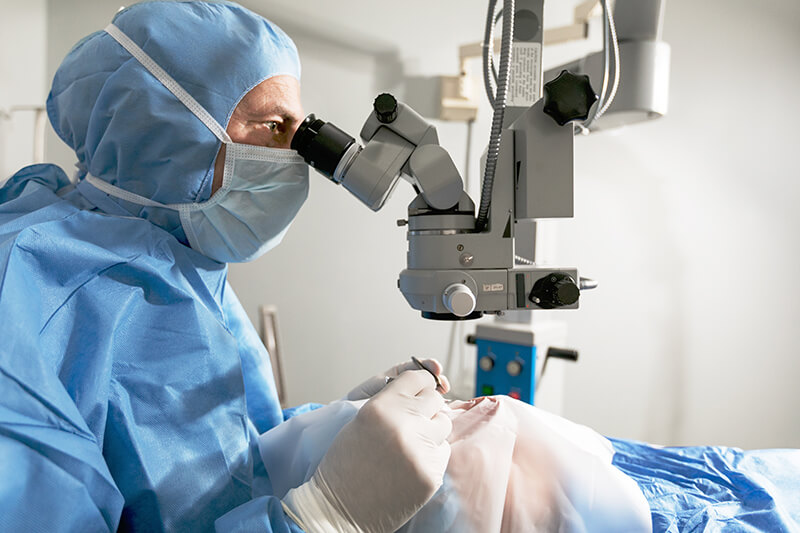About Corneal Transplant
The cornea is a window of transparent tissue at the front of the eyeball. It allows light to pass into the eye and provides focus so that images can be seen clearly. Various diseases or injuries can make the cornea either cloudy or change shape. This prevents the normal passage of light into the eye and affects vision.
The cornea has three main layers (thin outer and inner layers and a thick middle layer). In some diseases, only the inside layer (endothelium) is affected, causing corneal oedema (swelling) and clouding.

Deep Anterior Lamellar Keratoplasty (DALK)
DALK removes the outer three layers of the cornea and replaces them with donor layers to give a partial-thickness corneal transplant. A Suture is used, which is usually removed a year after the procedure . 90% of patients achieve driving standard of vision however glasses or lenses may be needed or in some cases, another surgery; full recovery may take up to 18 months. There are risks with DALK but serious complications are rare. Astigmatism is common and may need special contact lenses or surgical management after the removal of all sutures .Rejection of the transplanted cornea can also occur but in less than 10% of cases in the 2 years after surgery and it is easy to treat as the rejection does not affect the rear corneal layer (endothelium). DALK generally has a lower risk. However, DALK has a slightly lower chance of achieving 6/6 vision (excellent vision) than with full thickness grafts.
Endothelial Keratoplasty (DSAEK and DMEK)
EK replaces the inside layer of the cornea with a donor layer inserted through a small incision without the need to suture the graft. Most patients achieve driving vision, sometimes with glasses, and it can take up to 6 months to see the full benefits. It is a new type of corneal graft and complications are less serious, these include rejection of the transplanted cornea, graft failure, glaucoma and graft dislocation, which may require the repositioning of the graft by using air or gas, which can be done easily under topical anesthesia. Endothelial Keratoplasty offers faster recovery compared to full-thickness grafts, due to the smaller incision and no suture related problems such as astigmatism, broken suture or inflammation.
Penetrating Keratoplasty (PK)
PK is a full thickness transplant and 75% of patients achieve driving vision, possibly needing vision aids or another surgery, and around 18 months for full improvement of vision. Risks are not common but can be serious and sight threatening including corneal transplant rejection, graft failure, glaucoma, cataract, high astigmatism.

Types of Corneal Transplants
- Deep Anterior Lamellar Keratoplasty (DALK)
- Endothelial Keratoplasty ( DSAEK and DMEK)
- Penetrating Keratoplasty
All the corneal transplant operations are performed under general or local anaesthetic and take about one hour. Patients are examined after surgery and generally go home the same day. They need to use steroid drops for about 1 year, or less for Endothelium Keratoplasty.
Corneal transplant rejection
A corneal transplant can occur due to a rejection or attack by your immune system. This happens in one in six patients in the first two years after transplantation and can cause the failure of the graft. A rejection can often be reversed if anti-rejection medication is started promptly.
Rejection remains a possibility for your lifetime.
Symptoms of rejection are:
- Red eye
- Sensitivity to light
- Visual loss
- Pain
A failed transplant can be replaced in a procedure known as a regraft. However, the risk of rejection and failure increases each time a regraft is carried out.
Request an Appointment


